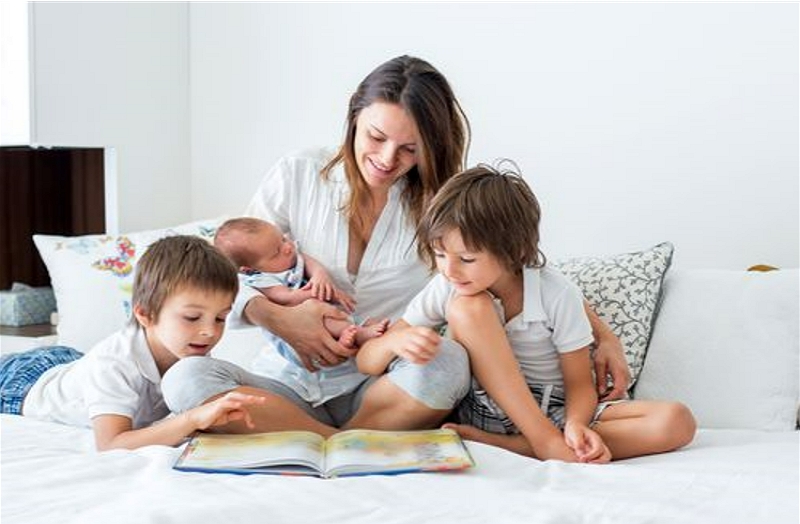How to stop babying your baby book? It’s time to stop babying your baby book and start living in the present.
Here are four tips to get you started:

- Stop comparing your child’s milestones to other children’s. Every child develops differently and at their own pace.
- Focus on enjoying the moment instead of worrying about what comes next.
- Try not to overthink every decision. Trust your instincts and go with your gut.
- And finally, don’t forget to have fun! Babies are only little for a short time, so enjoy it while you can.
- So there you have it, four tips to help you stop babying your baby book and start living in the present. Just remember, every child is different and there is no one right way to do things. So relax, go with the flow, and most importantly, enjoy this special time with your little one.
Do you have any tips to add? We’d love to hear from you in the comments below!
When can babies see high contrast books?
Babies can see high contrast books from birth. However, they will only be able to focus on them for a short period of time. Around two to three months old, babies will start to be able to track objects with their eyes.
This is when they will be able to spend more time looking at high contrast books. Babies typically enjoy looking at black and white images during this stage of development. After three months, babies will also start to be interested in other colors and patterns.
High contrast books are a great way to stimulate your baby’s developing vision. They are also a fun way for you and your baby to bond! If you’re not sure where to start, ask your paediatrician or local librarian for recommendations.
Some great high contrast books to start with include:
- The Very Hungry Caterpillar by Eric Carle
- Brown Bear, Brown Bear, What Do You See? by Bill Martin Jr. and Eric Carle
- Pat the Bunny by Dorothy Kunhardt
- Where is Baby’s Belly Button? by Karen Katz
- Corduroys Christmas by Don Freeman.
Do babies prefer black and white?
Some studies suggest that babies may prefer black and white patterns over other colors. One study found that newborns spent more time looking at a black and white pattern than at a red and green one.
Another study found that three-month-olds were better able to focus on objects against a black background than on objects against a white background. It’s not clear why this might be, but it could have something to do with the fact that black and white are the most common shades in the natural world. Babies may be drawn to these colors because they help them see things more clearly.
Another possibility is that babies associate black and white with strong contrasts. This could make them easier to distinguish from one another, which would be helpful for newborns who are still trying to make sense of the world around them.
Whatever the reason, it’s clear that babies are attracted to black and white patterns. So if you’re looking for a way to engage your little one, try showing them some black and white images. You might be surprised by how much they enjoy it!
What’s the difference between a board book and a hardcover?
A board book is a type of children’s book that is bound with cardboard pages. Board books are usually smaller and thicker than other types of children’s books and are popular with infants and toddlers who like to chew on the pages. Hardcover books are books that have a stiff cover made from either paper or cloth.
They are generally more expensive than paperback books but last longer because they are less likely to be damaged by wear and tear. Hardcovers can also be rebound if they become too worn out.
Board books are often preferred for very young children because they are durable and relatively inexpensive. They typically have large, simple text and illustrations that babies can look at and touch without damaging the pages. Hardcover books are more expensive and require more care, but they can be passed down from generation to generation.
Hardcover books are also better suited for older children who can read longer texts and appreciate more detailed illustrations.
Whether you choose a board book or hardcover will depend on your child’s age and interests, as well as your budget. With so many great options available, it’s easy to find the perfect book for your little one!
At what age are black and white books good for babies?
There is no definitive answer to this question, as different babies will respond differently to different types of books. However, black and white books are generally considered to be good for young babies, as they can help to stimulate their developing vision.
Babies around the age of six months old tend to be particularly fascinated by black and white images, so this is a good time to introduce them to this type of book.
Of course, every baby is unique, so you should ultimately let your child’s interests guide you when it comes to choosing books for them. If they seem bored or uninterested in a black and white book, try introducing them to one with more color and see if that captures their attention instead.
At the end of the day, the best way to determine if black and white books are right for your baby is to experiment a bit. Try out different types of books and see which ones they respond to the best. With a little trial and error, you’ll be able to find the perfect reading material for your little one.
